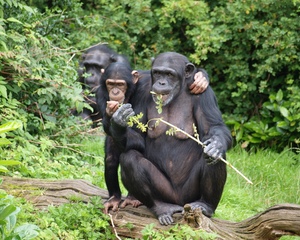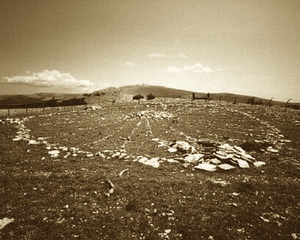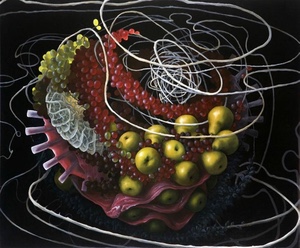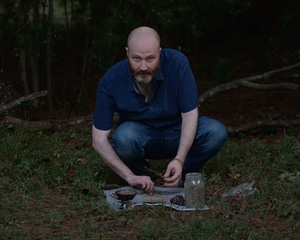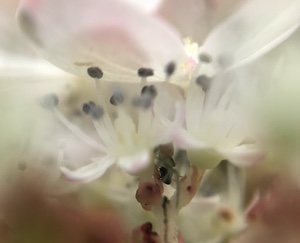Two of the Greatest ‘Healing Weeds’ in the World
By Nimal Chandrasena
Sign up for our monthly newsletter!
Nature has generously offered humans and other animals its bounty, which includes a wide range of weedy colonizers, rich in many bioactive compounds with strong biochemical properties. Some have been associated with humans for many millennia. Others, perhaps, for the past few hundred years. Among the Nature’s bounty are weeds of exceptional medicinal value, which commonly occur on disturbed habitat around human habitations. Two of the most outstanding, both natives of South Asia, are Asian pennywort (Centella asiatica) and brahmi (Bacopa monnieri).
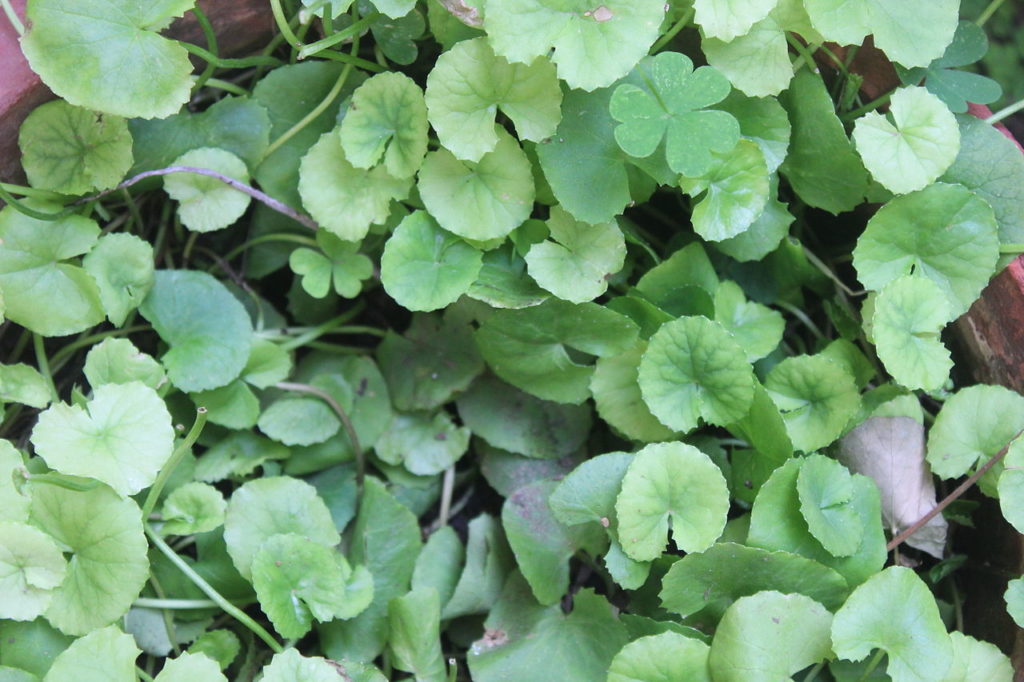
Photo: Likhitha Lily, CC BY-SA 3.0
Centella asiatica – Asian pennywort
Centella asiatica, world-widely known as ‘gotu kola’ (a Sinhalese/Sri Lankan vernacular name, referring to the kidney-shaped leaves), is a stoloniferous creeper of the carrot family (Apiaceae). It has long been one of my favourite plants. Most Sri Lankans in Australia have ‘gotu-kola’ grown either in pots or in backyard beds. We often eat it as a salad or make a rice konji (porridge) with crushed leaf extracts 1, 2.
The typical Indian name for the plant is ‘Brahmi’, derived from ‘Brahma’, the supreme creator god in Hinduism. This name reflects the recognition of the plant for more than 5000 years as the ‘herb of enlightenment’ or ‘friend of the brain’ in Ayurveda. High praise indeed for a humble weed species!
The Susrutha Samhita Ayurvedic text states that taking Brahmi preparation will: “give a favourable turn to one’s fortune, impart a lotus-like bloom with perpetual youth, unparalleled intellectual faculties, and a life that would cover three centuries of song and sunshine” 3.
Centella is found in most tropical and subtropical countries in Asia, Africa, Madagascar, South-Pacific islands, and even Eastern Europe, growing in swampy areas. In Australia, it is considered ‘naturalized’. Although Centella is not promoted in Eastern Australia, it is widely encouraged in Western Australia. In Perth’s Canning River suburbs, not far from where I live, it is an important groundcover species used in rehabilitating disturbed vegetation remnants and other areas.
Increased research has resulted in a vast repository of information on Centella’s pharmacological profile, which is quite complex. Triterpenoids and saponins are Centella’s primary constituents, considered responsible for a range of its therapeutic effects.
The dominant phyto-chemicals: asiaticosides: A and B, and triterpene acids – asiatic acid, madacassic acid, madasiatic acid, are implicated in anti-oxidant and neuro-protective roles. The same compound, possibly in mixture, cause improved venous blood flows that can affect various body functions.
Centella also contains various other bioactive flavonoids and triterpenoid saponins – brahmoside, brahminoside, centelloside and madecassoside 4, 5.
For thousands of years, Centella asiatica has been consumed as a ‘rejuvenating herb’ to revitalize the nervous system and enhance memory. It is also used internally as a blood purifier, for high blood pressure and against diarrhoea, fever, and diseases of the female genito-urinary tract. Ayurveda also uses Centella in treating emotional disorders, such as depression and anxiety 5.
Externally, the traditional uses include pastes of the herb, which relieve inflammation, expedite wound healing and improve various skin conditions (leprosy, eczema, psoriasis, burns, scars and varicose veins). However, the exact phyto-chemicals involved in eliciting physiological responses or the underlying mechanisms involved are poorly understood 5, 6.
Nowadays, the global cosmetic industry giants have focused their attention on Centella. The past two decades have seen the emergence of various skin care products – anti-ageing, anti-inflammatory, and anti-allergic skin creams, ointments, gels and powders, containing about 30 to 70% of Centella extracts 7.
Madecassoside is often considered the principal component in anti-ageing and anti-inflammatory creams, as the stimulating agent for the production of collagen in our skin. Some products have been found impressive in treating cellulites and varicose veins. All such treatments rely on improved blood flow to affected areas of the skin or limbs, reducing sclerosis (hardening) in tissues. These preparations have varying concentrations of asiaticosides and asiatic acids, and other constituents 8.
These cosmetic products are not well regulated but are popular in Europe, Asia, South-East Asia and North America with large market volumes. In Singapore, China and Korea, there are various commercial products with Centella preparations made into skin creams, moisturising lotions and eye treatment serums. Preparations of the weed are now available as teas, capsules, tinctures, and tablets, standardized to about 10% asiaticosides 8.
In recent times, Centella has also been recognized as an important medicinal herb in the USA and other Western countries. However, in the USA, the FDA is yet to evaluate Centella cosmetics or other products. The FDA’s preference is to only ‘regulate’ such products for the manufacturers’ claims on quality and composition 9.
In Europe, too, many commercially available Centella products are not yet thoroughly tested and proven for pharmacological benefits. Nevertheless, uses in Western European countries over the past 50 plus years without any recorded pharmacological adverse effects prove that Centella commercial products are safe to use 10.
A well-controlled study in Thailand in 2009 confirmed the improved physical fitness benefits achieved by Centella (doses of 500 and 750 mg per day) in a group of healthy, elderly people. The herbal, taken continuously for 90 days, improved muscle strength, especially in the lower extremities of the elderly, proving its potential to be a resource for vigour and strength in healthy elderly persons 11.
Given its importance as a crop with high nutritional and medicinal values, India developed a large-leaf and high-yielding Centella asiatica variety called “Vallabh Medha” in 2010-11 12.
It appears that Centella’s known ‘rejuvenative capacity’ to improve the ‘body, mind and spirit’ may be related to increasing the blood flow to specific areas of the body, including muscle masses and extremities. As highlighted in recent reviews, these aspects are getting increased research attention 13.
While we await more scientific proof of pharmacological effects, Centella must be considered among the undoubted top ten weed candidates globally, valued for therapeutic uses. Its uses for potential benefits are likely to expand further in the coming decades in Western countries, including Australia.
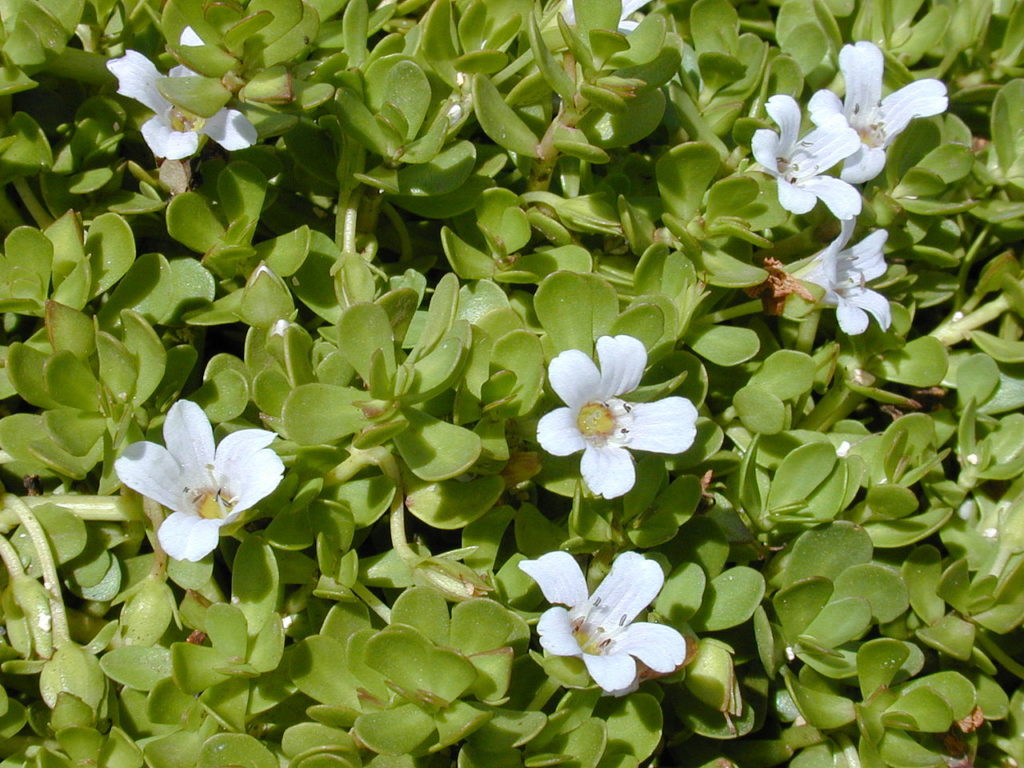
Photo: Forest & Kim Starr, CC BY 3.0
Bacopa monnieri – ‘brahmi’
Given that the brain is the central organ for intelligence, any medicine that improves the brain’s health is called ‘Brahmi’. As a result, in India, apart from Centella asiatica, a second weed species – Bacopa monnieri – is also called ‘Brahmi’. Both are used to boost memory, restore cognitive deficits, and improve mental function.
Bacopa monnieri (Family: Scrophulariaceae) is a fleshy, small-leaved aquatic herb, now spread throughout the tropics and sub-tropics. In India, the species is a highly-valued Ayurvedic herb used to treat nervous system disorders, including neuralgia, hysteria, epilepsy and insanity, and snakebites.
It is considered the main constituent of the herbal medicine ‘Medhya Rasayana (In Sanskrit: Medhya – intellect or memory retention, Rasayana – preparation), designed to treat memory loss, anxiety, cognitive enhancement, increase concentration, thereby reducing learning time 1.
Growing up in Sri Lanka, we called Bacopa monnieri “lunuwila” (meaning a plant that grows in slightly salty water, associated with rice paddies). My mother and many others in Sri Lanka used it as a mild purgative. It is also known to be effective in treating epilepsy and insanity, both of which are ailments of the nervous system 2.
Bacopa’s main active substances are a complex mixture of steroidal saponins, including bacosides (bacoside-A and bacoside-B) and alkaloids – brahmine, nicotine, and herpestine. The alkaloid brahmine has been shown to raise blood pressure when administered in therapeutic dosages 3.
Alcohol extracts of the plant have shown anticancer activity against Walker carcinoma. Extracts have also shown promise as muscle relaxants and cardiovascular relaxants. Generally, there is significant evidence emerging that Bacopa offers increased cerebral blood flow, anti-oxidative neuro-protection and acetyl-cholinesterase enzyme inhibition 1, 3.
Ayurveda uses Bacopa to treat inflammatory conditions, such as arthritis and as a wash on burns. The plant is also taken internally for indigestion, ulcers, wind, constipation, asthma, bronchitis and infertility. A poultice made of the boiled plant is applied to children’s chests to treat acute bronchitis and other coughs 4.
Long-term human trials or safety evaluations of Bacopa preparations are yet to be conducted in the USA or Europe. Despite this, a patent has been registered in the USA for future drug development 5.
Research not just in India but also in other countries is convinced of Bacopa monnieri becoming even more critical in the future in treating cognitive impairments, such as the neuro-degenerative Alzheimer’s disease.
Nowadays, Brahmi Ghritam (clarified butter-based oral supplement), Brahmi Churna (powder), capsules and tablet forms are popular in India. Standard treatments are Brahmi capsules in doses of 250–500 mg or Brahmi Churna or Ghritam in quantities of 1–2 g, once or twice a day, to counter Alzheimer’s and other impairments 6.
Dr. Nimal Chandrasena, based in Perth, Australia, is the Editor-in-Chief of the new journal WEEDS: Journal of the Asian-Pacific Weed Science Society. You can visit this informative journal here. (https://weeds-apwss.scholasticahq.com/)
Citations for Centella asiatica – Asian pennywort
1. Bandara, M.S., et al (2011). Gotu Kola (Centella asiatica L.): An under-utilized Herb. The Americas Journal of Plant Science and Biotechnology, 5: 20-31.↩︎
2. Chandrika, U.G. and Prasad Kumara, P.A.A.S. (2015). Gotu Kola (Centella asiatica): Nutritional Properties and Plausible Health Benefits. Advances in Food & Nutrition Research, Vol. 76. Chapter 4: 125-157. Elsevier.↩︎
3. Susrutha Samhita. See Note 338 (2) (p. 162). The Sanskrit name for gotu kola is mandukaparni, or “frog-leaved,” as the leaves are reminiscent of the webbed feet of a frog.↩︎
4. Gohil, K.J. et al. (2010). Pharmacological Review on Centella asiatica: A Potential Herbal Cure-all. Indian Journal of Pharmaceutical Sciences, 72(5): 546–556.↩︎
5. James, J. and Dubery, I.A. (2009). Pentacyclic Triterpenoids from the Medicinal Herb, Centella asiatica (L.) Urban. Molecules, 14, 3922-3941.↩︎
6. Krishnamurthy, R.G. et al. (2009). Asiatic acid, a pentacylic triterpene from Centella asiatica, is neuroprotective in a mouse model of focal cerebral ischemia. Journal of Neuroscience Research, 87: 2541–2550. ↩︎
7. Shinomol G.K., et al. (2011). Exploring the Role of “Brahmi” (Bacopa monnieri and Centella asiatica) in Brain Function and Therapy. Recent Patents on Endocrine, Metabolic & Immune Drug Discovery, 5 (1): 33-48 (https://pubmed.ncbi.nlm.nih.gov/22074576/).↩︎
8. (1) Ointments and tablets of Centellase ® – https://www.mims.com/singapore/drug/info/centellase; (2) Generic Drugs Website – Centallase ®; Madecassol ®; Blastostimulina ® Eye Drops (https://www.ndrugs.com/?s=centellase).↩︎
9. European Medicines Agency (2010). Assessment report on Centella asiatica (L.) Urban, herba. p. 44 (https://www.ema.europa.eu/en/documents/herbal-report/final-assessment-report-centella-asiatica-l-urban-herba-first-version_en.pdf).↩︎
10. Faerman, J. (2019). Gotu Kola: The Many Benefits of the Ancient Herb of Enlightenment and Longevity. ConsciousLifestyles Magazine (https://www.consciouslifestylemag.com/gotu-kola-benefits-of-the-herb-of-enlightenment/). ↩︎
11. Mato L, et al. (2011). Centella asiatica improves physical performance and health related quality of life in healthy elderly volunteers. Evidence-Based Complementary Alternative Medicine, 2: 465–73.↩︎
12. Source: The Directorate of Medicinal & Aromatic Plants Research (DMAPR), Anand, Gujarat, India. The new variety produces 4-5 times larger biomass than local varieties and has much higher quantities of active ingredients (http://dmapr.icar.gov.in//Research/Varieties.html). ↩︎
13. (1) Belwal, T. et al. (2019). Chapter 3.22 – Gotu Kola (Centella asiatica), pp. 265-275. In: Nabavi, S.M. et al. (Eds.) Nonvitamin and Nonmineral Nutritional Supplements, Academic Press; (2) Murray, M.T. and Nowici, J. (2020). Chapter 64 – Centella asiatica (Gotu Kola), pp. 501-505. In: Pizzorno, J.E. and Murray, M.T. (Eds.) Textbook of Natural Medicine 5th Edition, Elsevier Inc.↩︎
Citations for Bacopa monnieri – ‘brahmi’
1. Shinomol G.K., et al. (2011). Exploring the Role of “Brahmi” (Bacopa monnieri and Centella asiatica) in Brain Function and Therapy. Recent Patents on Endocrine, Metabolic & Immune Drug Discovery, 5 (1): 33-48 (https://pubmed.ncbi.nlm.nih.gov/22074576/).↩︎
2. A Collection of Medicinal Plants in Sri Lanka. Bacopa monnieri (http://www.instituteofayurveda.org/plants/plants_detail.php?i=1232&s=Local_name).↩︎
3. Chaudhari, K.S., et al. (2017). Neurocognitive Effect of Nootropic Drug Brahmi (Bacopa monnieri) in Alzheimer’s Disease. Annals of Neurosciences, 24: 111–122 (https://www.ncbi.nlm.nih.gov/pmc/articles/PMC3746283/).↩︎
4. Aguiar, S. and Borowski, T. (2013). Neuropharmacological Review of the Nootropic Herb Bacopa monnieri. Rejuvenation Research, 16(4): 313-326.↩︎
5. Nemetchek, M.D. et al. (2017). The Ayurvedic plant Bacopa monnieri inhibits inflammatory pathways in the brain. Journal of Ethnopharmacology, 197: 92–100.↩︎
6. Kahol, A.P., et al (2004). United States Patent US006833143B1. Council of Scientific and Industrial Research: Process for the preparation of a extract rich in Bacosides from the herb Bacopa monnieri. (December 21, 2004).↩︎

As Ireland transitions from the rich, smoky scent of peat-burning to a more sustainable future, its olfactory heritage is evolving. What will become the next iconic aromatic symbol of Ireland?
Click to watch the documentary trailer.


